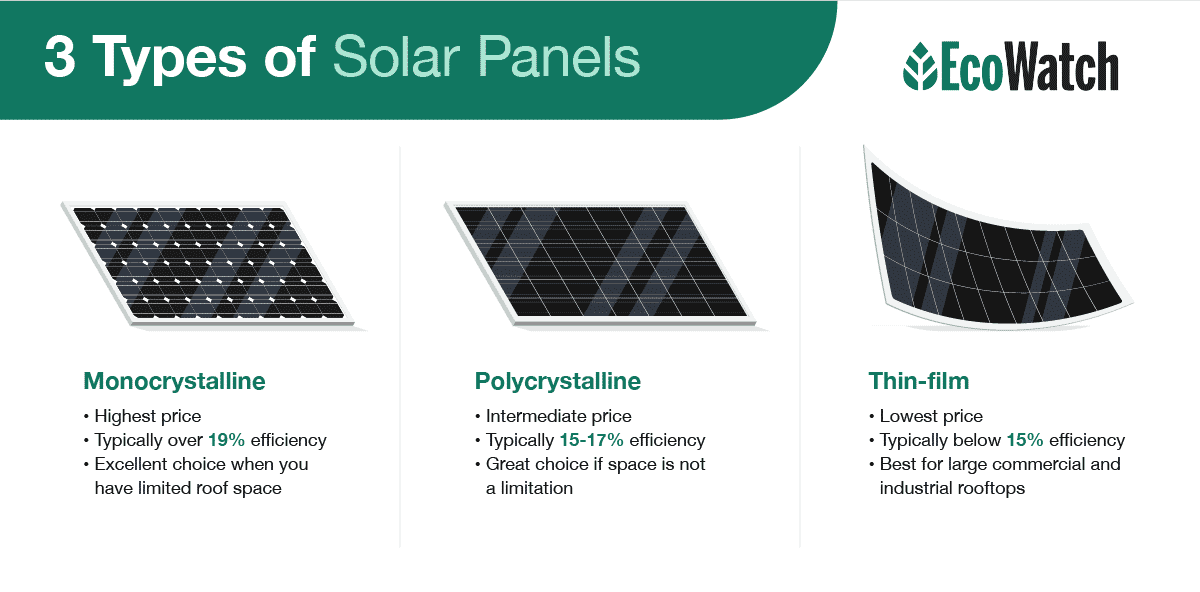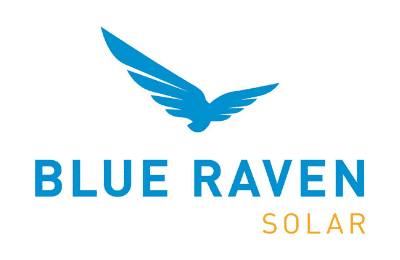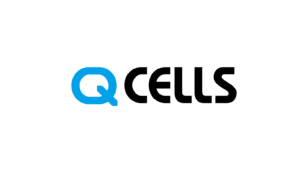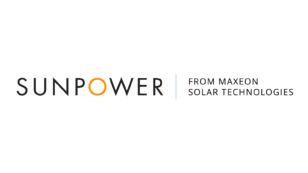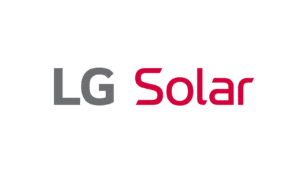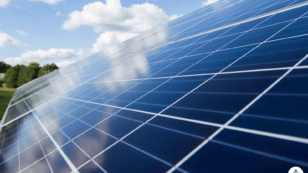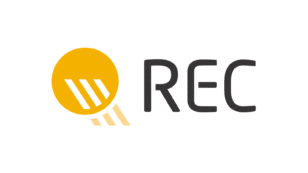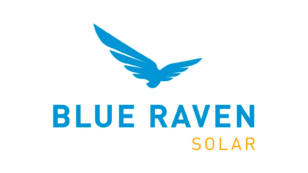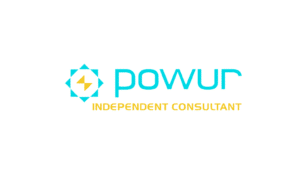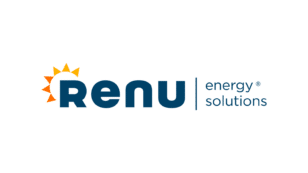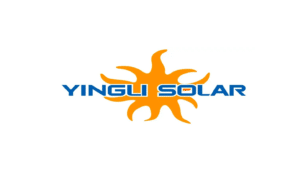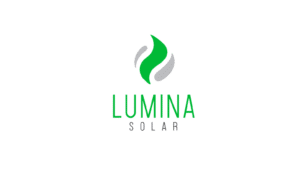
5 Best Solar Panels for Homes (2024 Costs, Reviews & More)
In this EcoWatch guide on the best solar panels for homes, you’ll learn:
- Which solar panels provide the most value and which are the most affordable
- What homeowners should consider when buying solar panels
- How mono and polycrystalline solar panels differ from one another
- Which factors have the biggest impact on solar panel performance
Each product and or company featured here has been independently selected by the writer. You can learn more about our review methodology here. If you make a purchase using the links included, we may earn commission.
Most solar panel manufacturers produce photovoltaic (PV) panels for residential use, but the options aren’t all created equal. Each brand has a different efficiency level, rate of degradation, durability and more, so choosing the best option for your solar project can be quite confusing. To make matters worse, opting for the wrong brand could cut into your energy savings over time.
In this article, we’ll be discussing the top five best solar panels for homes, and we’ll explain why each is a great option for your rooftop solar system. We’ll also explain what to look for in a high-performance panel to help you pick the best one for your needs. You can also refer to our review of the top solar panel installers if you’re searching for the best provider for your home.
What Are the Best Solar Panels for Homes?
The five solar panel companies below are the manufacturers we’ve identified as the best in the industry for home PV panels:
- SunPower (Maxeon): Most Efficient (Read more)
- Qcells: Consumer Favorite (Read more)
- Trina Solar: Best Value (Read more)
- REC Solar: Most Reliable (Read more)
- Panasonic: Best Temperature Coefficient (Read more)
We’ll explain why we feel these panels are the best in the solar industry for home renewable energy systems below. Each panel includes a drop-down menu with additional information.
Compare the Top-Rated Solar Panels for Homes
Of all of the panel models from the manufacturers mentioned above, there are two that stand out for providing outstanding performance and overall value. These include the Maxeon 6 panels from SunPower and the Q.PEAK DUO BLK ML-G10+ from Q Cells. These both provide above-average production and savings without compromising on overall quality.
The table below includes a quick look at these two panel options and how they stack up against one another.
| Efficiency Rating | Power Output | Temperature Coefficient (per degree C over 25) | Power Tolerance | First-year Degradation | Subsequent-year Degradation | Efficiency After 25 Years | Total Warranty Term | |
| Maxeon 6 | 22.8% | 410W–440W | -0.27% | 0/+5% | 2% | 0.25% | 92% | 40 years |
| Q Cells BLK ML-G10+ | 20.9% | 385W–410W | -0.34% | 0/+5% | 2% | 0.5% | 85.5% | 25 years |
| Trina Solar Vertex S | 21.1% | 405W | -0.34% | 0/+5% | 2% | 0.55% | 84.8% | 25 years |
| REC Alpha Pure-R | 22.3% | 430W | -0.24% | -3%/+3% | 2% | 0.25% | 92% | 25 years |
| Panasonic EverVolt | 22.2% | 400W–410W | -0.26% | 0/+10% | 2% | 0.25% | 92% | 25 years |

Sunpower

Average cost
Pros
- Most efficient panels available for homes
- Cradle to Cradle certified sustainable
- Industry-leading warranty coverage
Cons
- Expensive

Q Cells
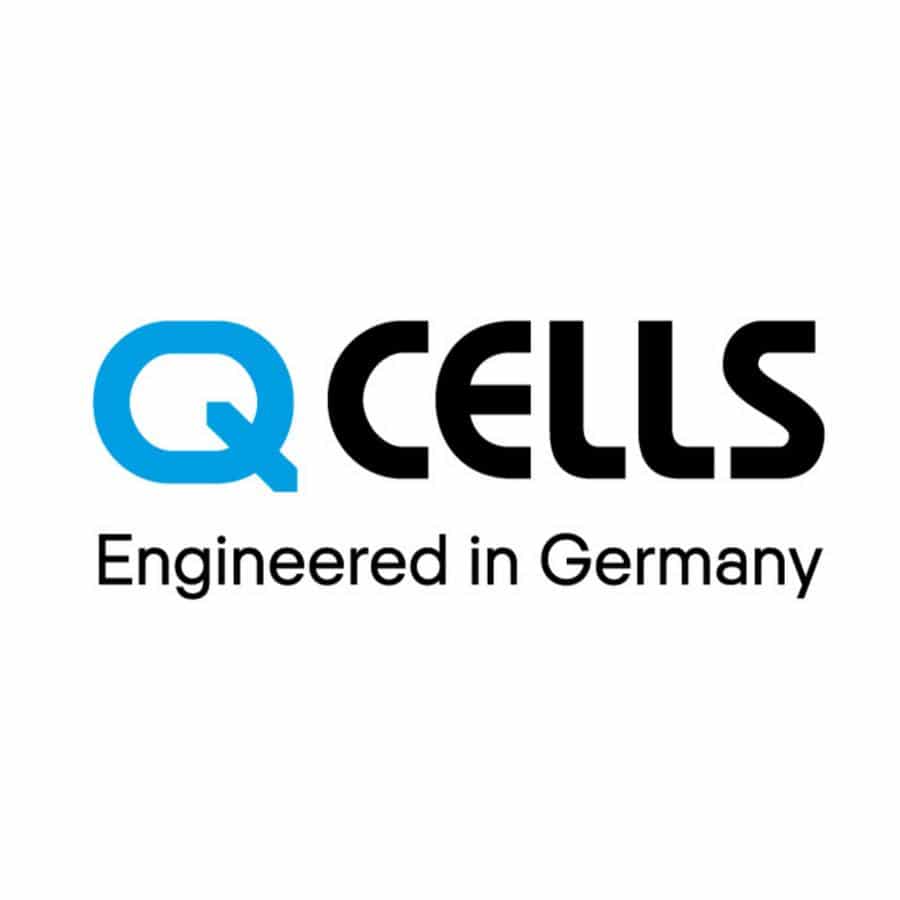
Average cost
Pros
- Competitively priced
- Highly efficient
- Work well in high temperatures
Cons
- Only one type of technology available
Q Cells, which is a brand manufactured by Hanwha, is the best solar company for value, in our opinion. Despite being more affordable than most other tier-one solar panel brands at around $3.00 per watt, its panels still have above-average efficiency ratings and performance specs. They’re not quite as impressive in their durability as some other options, but they’re still an outstanding choice for many solar customers.
We recommend Q Cells for solar customers who want the best performance per dollar.
What We Like
Q Cells panels get a lot of things right, including an average efficiency that’s around the industry average. That means your panels should generate plenty of electricity to offset your utility bills and reduce your carbon footprint.
It matches SunPower in terms of first-year solar panel degradation as well, so the efficiency over time is going to be better than you’ll see from many competitors. Ultimately, that means your panels will continue serving you and providing savings for many years to come.
Q Cells offers robust warranty coverage for performance and manufacturer defects that’s in line with the industry average of 25 years each. This will prevent you from having to carry out expensive repairs and should help avoid your production dipping below your consumption within the first two decades of operation.
Its panels also come rated to withstand 4,000 pascal units on the rear of the panel, which means it’s better than most for areas that see strong winds and will help prevent mishaps and costly replacements.
Finally, and most importantly, Q Cells panels average around $3.00 per watt, as compared to comparable brands that average around $3.30 per watt. On a 10kW system, that’s an average potential savings of $3,000 on your entire system, which is substantial and can significantly lower your all-in cost of going solar.
What We Don’t Like
While Q Cells matches SunPower in terms of first-year efficiency degradation, the efficiency loss per year after that is a bit higher. That means Q Cells panels won’t perform as well as SunPower’s over time, so your production will be significantly lower by the end of your panel’s life.
Ultimately, that could mean you’d need to replace your system sooner to ensure production keeps up with consumption. Additionally, the maximum efficiency currently available from the company is 20.9%. While this is above the industry standard, we’d love to see an efficiency rating topping 21%, like most of Q Cells’s direct competitors.
Q Cells also only has two solar panels for homes in production at this time. We’d ideally like to see more variety to give solar customers the opportunity to bring down solar panel installation costs or push up performance.
Solar Panel Options
As mentioned above, Q Cells has two solar panel options for home solar energy systems. We’ll list these below and include a brief description of each to help you decide which might be right for your home.
- Q.PEAK DUO BLK ML-G10+: This is the higher-efficiency option of the two, topping out at 20.9%. It comes in sizes from 385 watts up to 410 watts. These panels are all black, which most customers prefer. They have a low temperature coefficient that’s well below average, which means they’re better suited for hot climates than most panels and won’t drop significantly in production in high temperatures.
- Q.PEAK DUO BLK-G10+: This model is smaller than the ML-G10+ and comes with a lower power output per panel. It ranges from 350 to 370 watts. These panels have a slightly less appealing efficiency than the other option as well, at 20.6%. These panels have 120 cells each, as opposed to the 132 you get with the larger model. That means a lower overall production, so you might need more of these panels to meet your energy needs.
Warranty Information
Q Cells provides a 25-year warranty for all of its products, which covers manufacturer defects. This is in line with what most competitors provide, and it means you’re unlikely to have to pay for panel maintenance or major repairs unless inclement weather becomes an issue.
However, Q Cells has a special solar cell testing process that eliminates most issues related to potential-induced degradation (PID). Since PID can cause dips in panel efficiency over time, this helps Q Cells panels maintain their peak power generation capabilities.
Q Cells also covers efficiency for 25 years. This is also typical, but the degradation rate is below average. The first-year dip is set at a maximum of 2%, as opposed to the industry average of 2.5%, and the subsequent-year dip is 0.45%, which is just below the average of 0.5%. Overall, the slower degradation rate means your panels will continue producing more power than most other brands over the warranty term.
Installation Options
Q Cells doesn’t have a certification program for installers like SunPower does, so any solar provider that has a relationship with the company can purchase and install its panels. You should have no issues finding an installer near you that carries Q Cells equipment, although that does mean you’ll have to be careful when screening Q Cells installers to make sure yours is reputable.
Facts and Figures: Q Cells
| EcoWatch Rating |
|---|
| Average Cost ($-$$$$$) |
| Solar Services |
| 4 |
| $$ |
| Solar Panels, Solar Batteries |

Trina Solar

Average cost
Pros
- Great value for the cost
- Best-in-class warranty coverage
- Durable panels
Cons
- Only two residential solar panel options
In our opinion, Trina Solar is right up there with Q Cells when it comes to high-quality equipment for the money. Trina panels are a bit more expensive at an average of $3.55 per watt, and they deliver similar efficiency ratings, temperature coefficients and other performance specs. Ultimately, they should save you a decent amount of money over time, and the upfront cost isn’t outlandish.
Trina outclasses Q Cells when it comes to durability, with an industry-leading 1% efficiency loss in the first year and a superior 0.4% annual degradation after that. That means your panels will continue to generate maximum energy for many years to come, which could translate to a longer time between installing your panels and having to replace them to maintain sufficient production. This could end up saving you thousands in the long run.
We recommend these panels to solar customers who want outstanding value for their money and don’t have access to Q Cells panels or want to ensure their energy savings last as long as possible.
What We Like
All panels lose efficiency over time, but Trina provides some of the lowest degradation rates for the money. The panels are just slightly above-average in terms of cost per watt, but they outperform just about every other panel in its price range when it comes to durability.
Trina panels start out with above-average efficiency ratings as well, topping out at 20.4% and averaging around 20%, which is far better than the average of 15%. This means that Trina panels will generate more power per square foot they take up on your roof than most brands, which, ultimately, means a better chance of offsetting or even eliminating your electric bills.
Trina has great warranty coverage for its solar equipment, but one of the most appealing aspects about the protection is that, unlike companies like SunPower, there’s no specific training required to maintain the warranty coverage.
That means Trina remains widely available to customers across the country via a huge network of providers, and no matter who installs your Trina panels, you get coverage that will keep your panels totally protected.
What We Don’t Like
Trina’s average efficiency might be above the industry average, but it is lower than several other top-tier panels, like SunPower. We still feel the value provided is excellent, but there are more efficient solar options that can provide greater energy savings over time if you’re willing to invest a little more. Opting for a higher-efficiency panel could yield more savings in the long run, so Trina may not be the most cost-effective solar panel option in the long run.
Trina panels also come with a lower maximum wind load than many competitors, at just 2,400 pascal units. That means they might not be ideal for homes in areas that could experience high winds from extreme weather like hurricanes, tropical storms, tornadoes and other natural disasters. If you do install them in those areas, you could be on the hook for repairs sooner than you would if you opted for more weather-resistant panels.
Solar Panel Options
Trina Solar has two product lines available for residential customers: the aptly named Residential line and the Vertex line. There are five products total between the two product lines.
- Trina Solar Residential 335W: These panels come in power outputs ranging from 310 to 335 watts, making them much smaller than the average 400-watt panel you’ll see from most direct competitors. These panels are physically smaller as well and could be a good option if you have a small roof that can’t fit the larger panel options.
- Trina Solar Residential 365W: These panels are larger at between 355 and 380 watts, and they come with a max efficiency of 20.6%. These are good options for homeowners with roof space that can accommodate the larger panels but still want to pay as little as possible per watt, even if that means a less impressive efficiency rating than the following options.
- Trina Solar Vertex S 395W: These Vertex S panels are about average in power output for the top-tier panels, so they’re the option we’d recommend if you’re looking for standard-sized panels but still want great performance and a reasonable upfront cost.
- Trina Solar Vertex S 400W: These panels have an efficiency rating of 21.1%, so they’re going to lead to more savings over time than most of Trina’s other residential panel options. They also have a max wattage of 405 watts, so they’re one of the most appealing competitors to panels from companies like SunPower.
- Trina Solar Vertex S+ Bifacial: These panels have an efficiency rating of 21.8%, which is the highest you can get from Trina in terms of home solar energy systems. We’d recommend these for homeowners who still want decent pricing but want to get the most for their money and don’t mind paying a premium for high-efficiency panels.
Warranty Information
Trina’s warranty coverage is similar to what you’ll find from most other companies on this list. The coverage for the equipment and the labor is 25 years, so you’ll remain largely insulated from panel defects for the life of your system. Ultimately, that means less of a chance of having to pay for repairs.
The degradation in the first year and the following 24 years of the warranty term are both below average, and the company has the lowest first-year efficiency loss we’ve seen. This means your panels are virtually guaranteed to outperform most other panel brands in the long run, which translates to greater electricity savings for you in the long run.
Trina’s warranty doesn’t require any paperwork or installer training, so you don’t have to worry about not being covered because a non-certified company installed your panels. The warranty can be transferred as well, although you will need to file transfer documents if you sell your home.
Installation Options
As we mentioned above, Trina lets any solar contractor install its panels without voiding the manufacturer’s warranty or the performance warranty. That not only means that any panels installed by a professional will be covered but also that this panel brand is accessible to most U.S. residents.
Click here to find the Trina solar panel dealers nearest you.
Facts and Figures: Trina Solar
| EcoWatch Rating |
|---|
| Average Cost ($-$$$$$) |
| Solar Services |
| 4 |
| $$$ |
| Solar Panels |

REC Solar
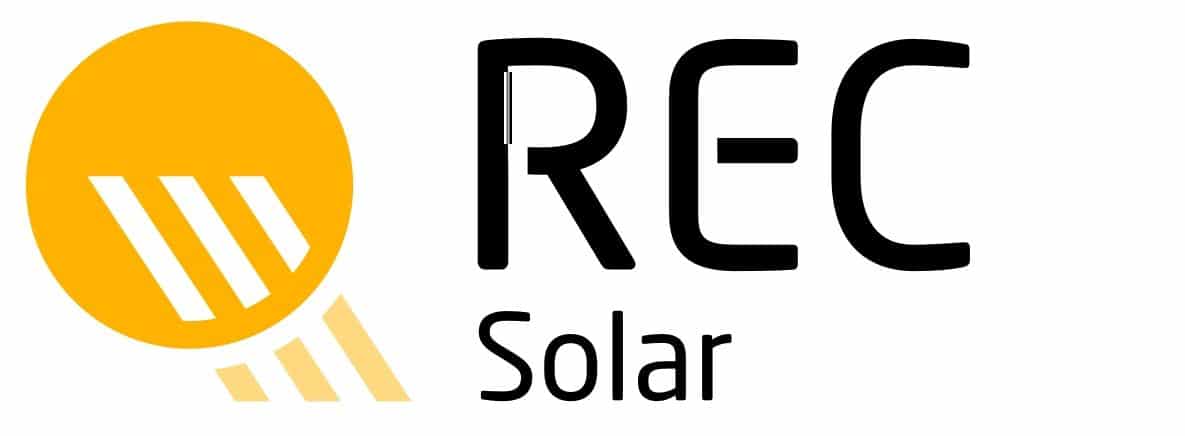
Average cost
Pros
- Highly efficient
- Durable panels
- Rigorous testing standards
- Work well in high temperatures
Cons
- Can be slightly expensive
REC panels are some of the most popular in America, in large part because they provide efficiency ratings that are well above average—topping out at 22.3%—but also have lower prices than options from other high-efficiency solar companies like SunPower and Panasonic. We’d recommend these panels to homeowners who don’t necessarily need the most impressive efficiency ratings possible but who still want above-average power output at a slightly lower cost.
What We Like
REC panels get a lot of things right, including efficiency. The average panel efficiency from the company is around 20.7% for residential models, which is well above average, and the max efficiency is 22.2%, making them one of the highest-rated panels available. Only a few other companies offer panels above the 22% mark.
These high efficiency ratings mean your panels will generate more power per square foot of roof space they take up, which means they should provide lower electricity bills for you over time. The high efficiency also means they’re a good option for homeowners with small roofs who need to pack in as much power as possible into a smaller area.
REC panels are known to be highly durable and adaptable to a wide range of climates and weather conditions. It has a below-average temperature coefficient of -0.32%, which means they lose less efficiency than the average panel per degree the temperature rises above 77 degrees (F). This means REC panels are a great option for delivering high performance in hot climates. It also has above-average wind and snow loads, so it’s a durable panel brand no matter where you live.
What We Don’t Like
REC panels come at prices that are quite a bit above average, at $3.75 per watt compared to the average of around $3.30. You do get better efficiency ratings for the price, so we still think it’s worth it, but the brand will push up your installation costs. The panel degradation is in line with the average for the top-tier brands, but at this price point, we’d love to see lower efficiency loss rates, which would mean better performance and greater savings for you over time.
Additionally, some of the REC panel models come with below-average equipment coverage, like the REC Twinpeak 4, which has just 20 years of protection. That could mean that you’ll have to pay for panel repairs or replacement sooner than you would with other options. It also suggests that the panels don’t go through the same rigorous testing that other brands do.
Read our full review of REC for more information.
Solar Panel Options
REC has three product lines for homes, which include five total panel options:
- REC Twinpeak 4: These are the smallest panels available from REC at between 360 and 375 watts. They have the lowest efficiency REC offers at 20%, so we’d recommend these for homeowners with small roofs who don’t need to maximize power production to meet high energy demands.
- REC N-Peak 2: These panels have a slightly superior efficiency rating of 20.3%, and they come in at the same wattage as the Twinpeak 4. These have a greater efficiency retention rate, though, maintaining an industry-leading 92% efficiency after 25 years.
- REC N-Peak 3 Black: This is the first entirely black panel from REC that has no grid visible grid lines, so it’s a desirable option from an aesthetic standpoint. These are larger at up to 400 watts, although they have a similar efficiency to the previous models.
- REC Alpha Pure: These panels are also all black, and although they’re more expensive than the previous options, they have a much better efficiency of up to 22.2% thanks to the use of heterojunction (HJT) solar cells. We recommend these for customers looking for a premium option that isn’t quite at the highest pricing option from the manufacturer.
- REC Alpha Pure-R: The Alpha Pure-R takes a step down in efficiency, coming in at just under 21%. However, they have a superior temperature coefficient of -0.26%/degree (C), which means it’s the company’s best option for homeowners in warmer climates. This makes it one of the best panel options in the industry for use in hotter areas.
Warranty Information
REC is one of the few solar manufacturers that bases its warranty coverage on the panel model you have installed. Most of the panels come with a 25-year manufacturer’s warranty for the equipment and a 25-year performance guarantee, but some only include 20-year equipment coverage.
Warranty coverage is an important thing to consider when it comes to solar panels, as a shorter warranty could mean you’ll need to pay for solar system replacement sooner. That might drive up your long-term costs of converting to clean energy.
Additionally, some of the REC panels guarantee 92% efficiency after 25 years, which is some of the lowest efficiency losses in the industry, while others have a more aggressive decline in efficiency. This means that REC panels should deliver better performance and more savings on electric bills while they’re functioning, so this could offset the risk of higher long-term costs due to shorter warranty periods.
Overall, we’d expect REC panels to last for between 25 and 30 years, on average.
Installation Options
REC has a certification program for installers across the country. If you get your panels installed by a certified contractor following the designation installation process, you’ll usually get a superior warranty package. However, just about any solar panel installer can carry and offer REC panels, which means the brand remains widely available throughout the country.
Facts and Figures: REC Solar
| EcoWatch Rating |
|---|
| Average Cost ($-$$$$$) |
| Solar Services |
| 4 |
| $$$ |
| Solar Panels |

Panasonic
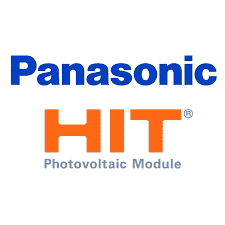
Average cost
Pros
- Great for extreme temperatures
- Top-tier electronics company
- Competitively priced
- Durable panels
Cons
- Expensive
Panasonic panels are well-known for their outstanding efficiency rating, topping out at 22.2%. However, they’re also some of the best for solar customers in extreme climates, as they have the lowest temperature coefficient of any panel option we’ve reviewed. The high efficiency and low temperature coefficient mean they’re a great solar panel option for providing maximum power in hot climates.
Panasonic panels are on the expensive side, but we feel they’re worth it due to their outstanding performance.
What We Like
Panasonic has a maximum efficiency rating of 22.2%, which is well above the industry average and higher than most of the company’s direct competition. A higher efficiency rating means more energy production, which should translate to greater savings for you on electric bills month after month.
The panels also have below-average degradation rates, so those above-average efficiency ratings will continue to save you more money on your energy bills for longer. Lower degradation rates also mean your panels should keep up with your electricity demands and consumption for longer, which could mean you won’t have to think about replacing your system quite as soon as you would with other brands.
Panasonic has great snow load capabilities and an industry-leading temperature coefficient of just -0.25%, so they’re an outstanding option in areas that experience extreme cold and extreme heat. This means they’ll produce more power for your home to offset a larger portion of your monthly electric bills even as the temperature rises, so they’re a good option for boosting savings if you live in a warmer climate.
What We Don’t Like
Panasonic panels are above-average in price, coming in at over $4.00 per watt. It’s one of the most expensive options, although we feel the value you get is worth the investment. Especially since the panels have higher production rates than most other brands, these should pay for themselves, especially if you have above-average rates of electricity consumption.
Panasonic is also the only option on our list that has a potentially negative power rating, so the performance can vary more than most of the competition at this tier. That means production could dip, depending on the weather and sun exposure.
Solar Panel Options
Panasonic has two lines of solar panels available for residential customers:
- Panasonic HIT: The HIT panels from Panasonic are the more affordable option from the manufacturer, and they have a lower efficiency rating of around 20.3%. They range from 325 watts up to 340 watts. These are ideal for customers who want the reliability of the Panasonic name, want to keep costs down and don’t necessarily need the highest efficiency ratings available.
- Panasonic EverVolt: The EverVolt product line includes a standard option and the H-Series. The standard EverVolt panels range from 360 to 370 watts, and the efficiency maxes out at 21.2%. This is a great option for balancing power output and price. The H-Series is better for customers looking for maximum efficiency ratings to offset high consumption. They are larger at 400 to 410 watts, and they hold the company’s highest efficiency ratings of 22.2%.
Warranty Information
Panasonic’s warranty coverage is slightly better than the industry average but is in line with the direct competition. It includes a 25-year product warranty and 25 years of coverage for the efficiency rating. The equipment warranty includes the cost of labor to replace any panels that experience failure.
The efficiency warranty is one of the best in the industry, guaranteeing only a 2% loss in year one and a degradation of 0.26% annually thereafter. That means your panels will retain 91.76% of their efficiency after 25 years.
Overall, we expect Panasonic panels to last the average of 25 to 30 years in most cases.
Installation Options
Panasonic partners with a large network of solar installers across the country, so you should have no problem finding a solar contractor that is certified to install its products. Many of those companies are also qualified to install Panasonic’s solar batteries and inverters/microinverters.
Facts and Figures: Panasonic
| EcoWatch Rating |
|---|
| Average Cost ($-$$$$$) |
| Solar Services |
| 4.5 |
| $$ |
| Solar Panels, Solar Batteries |
What Should You Look for When Choosing Solar Panels for Your Home?
Since there are so many panel options available from a massive selection of manufacturers, it’s important to focus on the aspects of the panels that will affect you the most. Prioritizing the below features, which we believe are most important for panels for your home, will likely provide you with the best experience and energy savings possible. Unfortunately, not choosing the right panels can lead to a solar energy system that doesn’t save you as much over time.
Compare the Top-Rated Residential PV Panel Manufacturers
For most homeowners, we believe panels from SunPower and Q Cells should meet and exceed expectations. Both solar companies provide panels with excellent performance specifications that can perform well in virtually all climates and weather conditions. We’ll compare the panel options from these companies overall in the table below to help you decide which might be right for your solar project.
| Efficiency Score (Out of 25) | Durability Score (Out of 20) | Warranty Score (Out of 20) | Price Point Score (Out of 20) | Temperature Coefficient (Out of 10) | Sustainability Score (Out of 2.5) | Appearance Score (Out of 2.5) | Our Overall Rating (Out of 100) | |
| SunPower | 25.0 | 19.0 | 20.0 | 6.0 | 10.0 | 1.9 | 2.3 | 84.1 |
| Q Cells | 23.0 | 17.0 | 16.0 | 16.0 | 7.0 | 1.9 | 2.5 | 83.4 |
| Trina Solar | 23.0 | 15.5 | 16.0 | 14.0 | 7.0 | 1.9 | 1.5 | 78.9 |
| REC | 25.0 | 13.0 | 16.0 | 10.0 | 7.0 | 1.9 | 1.8 | 74.6 |
| Panasonic | 17.5 | 16.5 | 16.0 | 8.0 | 10.0 | 2.5 | 2.0 | 72.5 |
Some other considerations for solar equipment, in addition to the five we’ve reviewed above, include Canadian Solar, Tesla and Silfab.
See Also: EcoWatch Solar Calculator – Calculate Your Home Solar Energy Savings
What is the Best Type of Solar Panel for Your Home?
When shopping for solar panels, it’s also helpful to know the panel types that are available. The three basic solar panel categories are monocrystalline, polycrystalline and thin-film. Each type of solar panel comes with its own list of pros and cons:
Monocrystalline Solar Panels
Monocrystalline panels are made from a single, pure crystal of silicon. This allows them to have higher efficiency levels, which means they’ll generate more power and offset more of your electricity bills over time. They also tend to be more expensive due to a more costly manufacturing process.
Note: If you have less space on your roof and can only fit a small number of panels, monocrystalline solar panels may be the only viable option that saves you money in the long run.
Polycrystalline Solar Panels
Polycrystalline solar panels are also made of silicon, but they are assembled from smaller fragments rather than a single crystal. This means polycrystalline solar panels are often a little less efficient than monocrystalline, which means they will, on average, save less on your electric bills over time.
They are also a more affordable option, so they’re usually preferred by homeowners looking to keep upfront conversion costs down.
Thin-Film Solar Panels
Finally, thin-film solar panels can be made from a variety of ultra-thin materials. They are recommended when you need something that’s lightweight, flexible and portable; they may work better for RVs and camping than for homes. Thin-film panels can be relatively low in efficiency when compared to the other two options.
These are not recommended for home use, as they efficiency often isn’t high enough to offset the electricity consumption of an entire home.
Do Top-of-the-Line Solar Panels for Homes Still Require Maintenance?
When weighing the pros and cons of going solar before making an investment, one of the most common questions that homeowners have is whether their solar panels will require maintenance.
For the most part, all the hard work comes on the front end. Installing a home solar panel system requires in-depth knowledge of electronics as well as solar power, and in most cases, the installation process will take a few days. We recommend outsourcing this to trained solar professionals.
Once your system is in place, however, the level of upkeep required is fairly minimal. Besides routine cleaning, you shouldn’t have any issues that require maintenance with your solar panels for 20 to 30 years. And if you do run into an issue, your warranty will hopefully cover it.
Solar warranties usually cover performance, manufacturer defects, the installation labor, or all three. Our recommendations for solar panels for homes include robust warranty coverage that should keep you insulated from repairs and expensive maintenance for decades.
Watch Below: If you are just beginning to explore the solar industry, you may want to spend a few minutes familiarizing yourself on how solar cells even work. In the below video, the TED team describes just that.
What Impacts the Performance of Residential Solar Panels?
Solar panels can vary quite a bit in their overall performance and productivity. There are a number of specific factors that can impact how your solar system performs, including:
- Orientation: When your home solar system is designed, your installer will be careful to position each solar panel in a way that maximizes its exposure to sunlight. If the orientation is even a little bit off, it can compromise the efficiency of your entire system. Panels should face toward the sun (to the south, usually, in the U.S.) and should be positioned at the right angle to get the most direct sunlight. Orientation is based on the direction your home faces, the roof pitch, and your latitude.
- Weather and sun exposure: If you live in a part of the country that doesn’t get consistent sunlight, or if your solar panels are often under cloud coverage, you’re not going to produce as much clean energy for your home. (There is a reason why solar panels are especially popular in the Sun Belt.) You might need to choose a higher-efficiency option like SunPower to maximize production, which is more likely to offset your electric bills even in cloudy or shady conditions.
- Cleanliness: While solar panels are fairly low maintenance, you may occasionally need to wipe them down, especially in the aftermath of an intense storm or during a season like spring or fall when there is pollen or falling leaves that can block your panels. If panels become covered with grime or debris, they may not be able to absorb as much sunlight.
- Shade: Keep in mind that any shade cast over your roof is going to impact the efficiency of your solar panels. If your house is surrounded by tall trees, for example, that could impede solar production. If part of your roof sees partial shade, you may need a panel with a higher efficiency rating to compensate for the losses.
Bottom Line: What’s the Best Residential Solar Panel for You?
Our top recommendations for residential solar customers are the panels from SunPower/Maxeon. This manufacturer has a long history in the solar industry and is known for its innovations and solar technologies that push the envelope in terms of efficiency, performance, durability and overall quality. SunPower panels are expensive, but we feel they’re well worth the investment if you can afford them.
Regardless of which panel brand you choose, we recommend getting multiple quotes from a few different solar installation companies in your area. Even if you opt for the same panel brand from multiple installers, your total solar panel system price can be wildly different due to individual pricing for labor and any discounts offered on the equipment. You can use the solar quote tool below to get multiple quotes customized for your home.
Methodology: How We Reviewed Solar Panels for Homes
In our solar panel review process, we first narrowed our research to the panels that are intended for and available for residential applications. To ensure you understand how we ranked the panels we’ve reviewed above, we’ll include a breakdown of how we scored these panels below.
- Efficiency (25%): First, we considered the efficiency rating and performance of each panel, as these are some of the biggest determining factors when it comes to long-term energy savings. One of the most significant appeals of renewable energy systems for customers is that panels will often pay for themselves and continue saving money after that, and better efficiency ratings and stats tend to reduce the payback period and boost savings over time.
- Durability (20%): The degradation rate in the first year and subsequent years is another crucial factor that determines the longevity of your panels and your savings in the long run. The faster a panel degrades, the less it will save you on your electric bills year after year. Panels with a higher starting efficiency aren’t always going to save you more if the degradation rate is also high.
- Warranty coverage (20%): Next, we look at the warranty coverage to make sure that your panels will continue performing and saving you money for years after installation. The specifics of the warranty—like degradation—are also considered for longevity and long-term panel performance.
- Price Point (20%): Since a solar array is likely to cost you over $20,000 before incentives like the federal solar tax credit (ITC), the cost per watt of a panel is always going to be important. We consider the price per watt in relation to the overall quality and performance to determine the panels that are likely to have the highest return on investment (ROI) over time, especially if you don’t have access to net metering.
- Temperature Coefficient & Adaptability (10%): To determine how adaptable a panel is for multiple climates and living situations, we look at a few things. First, the temperature coefficient tells us how suitable a panel is for hot climates. Second, we look at maximum snow and wind loads to determine if a panel is a good option for all areas throughout the country or if it is limited to areas that don’t see above-average snow and extreme weather.
- Sustainability (2.5%): As an environmentally conscious website, EcoWatch is concerned with how sustainable a panel manufacturer is overall. We do our best to promote panels that use recycled materials and manufacturers that have end-of-life recycling programs for their products.
- Appearance (2.5%): Finally, we know homeowners prefer panels that are all black and don’t have unappealing grid lines that are visible. We rank manufacturers based on how many of their panel options fit these criteria.
FAQs: Best Solar Panels for Homes
Below are a few questions EcoWatch readers regularly send in about the leading solar panels for home use. If you have anymore, do not hesitate to contact us at contact@ecowatch.com!
The best solar panels for your home will depend on your needs. If you have limited space on your roof, you should probably opt for the most efficient solar panels. If you live in a hot climate, temperature coefficient may be of more importance. Think about what you’d value most in your panels in order to decide which are best.
As with so many answers in solar, the number of panels needed to run a house depends on the situation — primarily the amount of energy that your home and habits require. Contact a local installer to get a free, no-obligation estimate for your home’s system.
As of 2022, SunPower’s M and A-Series panels take the top spot for most efficient solar panels. Both panels have efficiency ratings of at least 22.7%, the highest we’ve found.
The two biggest disadvantages of solar energy are the upfront cost and the fact that solar is so location dependent. Both public and private sectors are continuing to address these challenges, however, as more companies are adopting flexible payment methods and governments are pushing for more solar-friendly policies.

 233k
233k  41k
41k  Subscribe
Subscribe 
